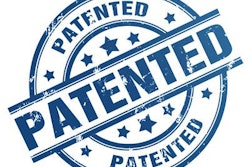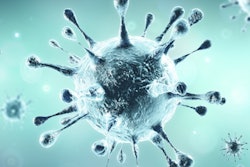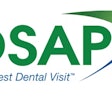
Integrating indoor air quality control strategies into shared areas such as dental offices can reduce the risk of asymptomatic SARS-CoV-2 infections, according to an editorial published on July 17 in Science and Technology for the Built Environment.
A combination of source control, ventilation, and air cleaning may significantly reduce the spread of the novel coronavirus, noted author Jensen Zhang, PhD, a professor and director of the Building Energy and Environmental Systems Laboratory at Syracuse University.
"The three [indoor air quality (IAQ)] control and management strategies can be implemented across multiple scales from the building to the room, and to the cubical and personal levels," he wrote.
A 3-step plan
Asymptomatic individuals with SARS-CoV-2 produce aerosols when they breathe or talk, resulting in airborne transmission, which is believed to be how the virus that causes COVID-19 became so widespread. Airborne transmission and aerosolization present challenges at dental practices where clinicians and hygienists work closely with one another and patients.
Integrating three indoor air quality control strategies can reduce the risk of SARS-CoV-2 infection by a factor of 8.5 to over 500, depending on the combination of strategies used and how well they are implemented, he wrote.
1. Source control
Considered the most important, source control includes detecting, tracking, and isolating patients with infections and preventing exposure from asymptomatic people. Though open office space makes this especially challenging since the air is often well mixed, the number of aerosols can be reduced through universal mask wearing and hand sanitizing prior to entering buildings.
The type of mask worn affects the emission rate. Wearing an N95 mask reduces the average emission rate by 95%. The average rate is reduced by 75% with surgical masks and 50% with cloth masks, according to Zhang.
2. Ventilation
Ventilation is necessary to ensure that an ample supply of clean outdoor air enters offices and that the virus concentration gets diluted effectively. Most buildings are mechanically ventilated with about 20% of the air coming from outdoors; the rest is recirculated air. This makes a building more energy efficient but results in only acceptable air quality. The outdoor ventilation rate should be raised to the maximum operational capacity of the office's ventilation system, which can be at least two times the rate under the normal operation mode per the existing standard, to reduce the risk of SARS-CoV-2 transmission, Zhang noted.
Additionally, any recirculated air must be filtered with high-efficiency particulate air (HEPA) or minimum efficiency reporting value 14 (MERV-14) filters, both of which remove particles from ambient air to minimize cross-contamination. Proper air distribution is necessary to ensure filtered air is reaching staff and those visiting the office, and it is a factor that many agencies have neglected in their guidance and businesses have left out of their return-to-work plans.
Furthermore, those offices that use mixed ventilation to deliver fresh air into rooms should change the route of the ventilation. In this type of ventilation, air diffusers are located close to the ceiling and allow for filtered air to mix with the exhaled breath of those who may have the novel coronavirus. Instead, the air supply should be delivered through ground-level vents. Ideally, there should be displacement ventilation, which delivers filtered air through floor-level vents but exhausts it through ceiling-level vents, Zhang wrote.
3. Air cleaning
Air cleaning includes air filtration with high-efficiency filters and adequate airflow within buildings and rooms. Using HEPA filters in recirculated or mixed air ducts can limit cross-contamination among rooms and boost the delivery rate of clean air to weaken the virus concentration in buildings.
Standalone room air cleaners with HEPA filters also are a simple, cost-effective way to reduce virus concentration. Research has shown a clean air delivery rate (CADR) of 170 m3/h to 800 m3/h with an off-the-shelf air cleaner that has a median cost of about $360. An air purifier with a CADR of 722 m3/h can double the clean air supply for 25 people in an office. Room air cleaners should be used with caution in buildings that have displacement ventilation, according to the Zhang.
Layers of protection
Though several of these strategies should be implemented to prevent the spread of the novel coronavirus, several things need to be better understood about transmission to offer optimal protection, including a better understanding of the relative risks of transmission. Research and development are needed to compare transmission by aerosols versus large droplets and exposure via objects, such as clothing, under different prevention and protection scenarios, he wrote.
"Integrating all three IAQ control and management strategies will be most effective in fighting the coronavirus," Zhang wrote.



















